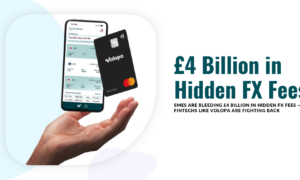Quick response (QR) codes have enjoyed something of a renaissance in recent years. Dismissed long after their creation for Japan’s automotive industry back in the 1990s, they’re now being deployed across multiple industries to connect physical and digital experiences.
For a long time, these blocks of compact code were unfamiliar to the wider public and unpopular among the few who encountered them. This was in part due to overuse of sales promotions and poorly optimised mobile experiences.
However, as technology evolves, so too does the accessibility and utility of QR codes. A great example of modern QR technology in action is the use of a QR code online generator, which simplifies the creation of these codes for businesses and consumers alike. Dynamic QR codes, in particular, offer the ability to update the linked information without changing the QR code itself, making them incredibly useful for marketing campaigns and operational adjustments.
But while factors such as increasing internet penetration and smartphone camera tweaks have aided their eventual rise, the pandemic has fuelled much of the new demand for contactless technology.
They have a number of use cases in supporting social distancing, for example, including:
- Menus in restaurants, avoiding physical menus being passed between guests and staff
- Audio and text guides in galleries, preventing overcrowding around physical guides
- Payment transactions, eliminating contact with physical payment cards and card terminals
Far from purely a pandemic necessity, many see QR codes as playing a leading role in a new contactless economy. Some 78% of the world’s population were smartphone users by the end of 2020, enabling more and more people to go contactless, both for security and convenience.
And while physical cards have been stepping up to replace cash for many years now, mobile payments – enabled by QR codes – are poised to surpass them both.
The future of mobile payments
Mobile payments, in all forms, negate headaches for consumers and merchants around debit and credit cards. But while established mobile payment models like Apple Pay and Samsung Pay rely on near-field communication (NFC) technology and costly card readers, QR code payments offer several advantages.
First is their comparatively low cost of installation. Transitioning from magnetic stripes to EMV chips or NFC technology has been frustrating and expensive for many merchants, but QR codes are mercifully more straightforward. They come with no expensive hardware of contract fees, often just a mobile app.
Plus, QR code payments are more secure as they demand authentication for each transaction a user makes, data is encrypted, and no customer details get stored.
QR-based payment systems can support multiple users at once too, preventing queues and frustration. This benefit is passed onto merchants who adopt open banking solutions in that they can take more payments at once and provide faster, easier shopping experiences, earning customer loyalty.
A practical example is how QR codes can be placed anywhere in a café, allowing customers to place orders and pay wherever they are just by scanning a code. This means staff don’t need to manually take orders, wait for card machines to become free or hang around for payments to complete.
The advantages of QR code technology are clear to see. Have you encountered and embraced QR code payments yet?



































